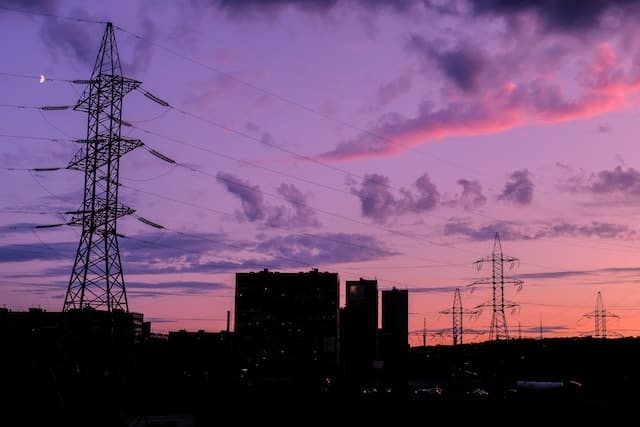Load-shedding is when utility providers purposefully reduce demand on their electrical grids by temporarily powering down certain areas. It allows the utility to prevent overloads and unscheduled long-term blackouts while allowing some areas of the grid to remain functional.
Load-shedding — more commonly known as rolling blackouts in the US — is more prevalent in developing countries. But it can affect US electricity users too.
Read on to learn more about how load-shedding works and how it can impact you.

How Does Load-Shedding Work?
Load-shedding proactively reduces the overall stress on a utility’s electrical grid by cutting power to portions of the grid at scheduled times.
Your utility company might implement rolling blackouts by briefly powering down specific neighborhoods to prevent overloads and stress on the grid as a whole, which could lead to unscheduled and extended electricity outages.
Although load-shedding negatively impacts some grid users temporarily, the goal is to ensure that customers will have reliable electricity over the long term, even during times of high demand.
Rolling blackouts often occur during extreme weather events, such as heat waves and extended periods of severe cold. The electricity demands from customers using HVAC systems can overwhelm the grid’s supply and cause equipment failures.
Load-shedding is often pre-scheduled to distribute demand for electrical power across the grid. It can also happen on demand if a primary energy source is struggling to provide power for its users. Sometimes, utility companies even incentivize building operators to voluntarily power down during peak usage periods to minimize the need for more wide scale outages.

Why Is Load-Shedding Necessary?
Load-shedding is necessary when the demand for electricity exceeds the physical capacity of providers to deliver it. When this happens, utilities can use rolling blackouts to manage demand while providing a reliable electricity supply.
Even if load-shedding means temporarily powering down some customers, it’s better than shutting the entire system down, and it helps avoid damage to the grid that could cause longer-term blackouts.
Without load-shedding, a surge in power demand can lead to catastrophic and extended grid failure. Load-shedding helps to maintain a crucial balance.
Load-shedding typically affects developing countries that may not have the power supply to serve their growing demand. South Africa is the most well-known example. Extended periods of load-shedding can have devastating effects on the economy.
Manufacturing is one of the most common types of business in developing countries. Even a temporary loss of power makes it hard for factories to stay afloat without employee layoffs. Decreased production and employment hurt the economy, and rolling blackouts can increase crime.
That said, load-shedding is still a better solution than doing nothing and allowing the grid to fail. Widespread, uncontrolled power outages would be common regardless in these areas, creating even more lasting, damaging effects.
In the US, rolling blackouts are not nearly as common, but it creates a crisis when they do occur. California’s Western US energy crisis in 2000-2001 is one example of when demand overstressed electrical supply during an ongoing shortage. Rolling blackouts occurred on 31 nonconsecutive days, during which customers experienced 42 hours of total outages.
Another example was the Texas Power Crisis in 2021. The event resulted in the aftermath of a powerful snowstorm that impacted residents and businesses across the state. Up to 702 people are estimated to have died due to extended blackouts.
Even though it’s sometimes necessary, load-shedding can be a significant inconvenience. For some, it can be fatal, such as those who rely on CPAP machines and require an uninterrupted power supply.
For these situations, the best safeguard is an off-grid solution, like a whole home generator. While anything tied to the grid risks losing power at one point or another, solar generators can run independently using energy produced by the sun and providing energy independence.

What Are the Advantages and Disadvantages of Load-Shedding?
While load-shedding provides overall benefits, rolling blackouts can also temporarily inconvenience many. When load-shedding goes on for extended periods, the effects on the economy and people’s quality of life can be dire.
Look at the most significant advantages and disadvantages to get a well-rounded perspective of load-shedding impact.
Advantages
- Avoids system-wide grid failure
- Prevents damage to power systems and permanent failure
- Restores power system stability
Disadvantages
- Creates unsatisfied utility customers
- Cuts revenue for the energy supplier
- Surges can occur when restoring power afterward, damaging appliances and equipment

Frequently Asked Questions
No, a blackout is what utility companies hope to avoid by managing the energy demand using load-shedding. A blackout is unintentional, whereas load-shedding is a deliberate action to prevent this situation.
In America, load-shedding is often referred to as a rolling blackout. Rolling blackouts are engineered grid shutdowns in certain areas to slow demand and avoid long-term blackouts.

Final Thoughts
Load-shedding can prevent the entire energy grid from going offline and leading to long-term power outages, but it can create a widespread impact. While it can temporarily inconvenience utility company customers, its benefits far outweigh these short-term issues. By understanding what load-shedding is, how it works, and why it’s necessary, we can see how important it is to keep our energy systems running smoothly.
The best solution for rolling blackouts is to have a backup power source, such as the EcoFlow Whole-Home Backup Power Solution. With solar power, you don’t have to rely on the whims of an unstable and overloaded grid.
